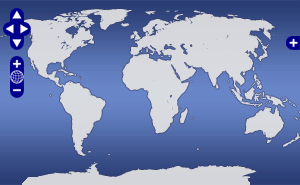Seismic:Reflection:MCS
Processed 2-D multichannel seismic reflection data from Oneida Lake, New York (2019)
In July 2019, approximately 217 km of 2-D multichannel seismic reflection data were collected along 27 profiles on Oneida Lake, New York using a 120 channel Seamux™ solid-towed array marine streamer with a 3.125 m group interval and a maximum offset of ~400 meters. Data were originally recorded in SEG-D format on a NTRS2 recording system. Navigational data and ancillary data (ship speed, depth, etc.) were fed into the external header of each field file. The seismic source was a 4x10 in3 Bolt 2800 LLX airgun array and was towed at ~1 meter depth to allow for venting of seismic source air bubbles. Gun pressures varied from 1500 to 2000 PSI. Air guns were fired every 6.25 m distance using two high resolution (Trimble) GPS receivers for navigation. This geometry provided 30-fold seismic coverage with a common midpoint (CMP) interval of 1.56 m. Record length is 2 seconds and the sample rate is 0.25 ms. The following processing steps were applied to the dataset using SeisSpace/ProMAX Software. Data were initially reviewed in shot mode and noisy traces were edited. Geometry was applied using source and receiver offsets with group and shot intervals, and data were sorted into the CMP domain. Stacking velocities were picked using a combination of velocity semblance plots and constant velocity stacks applied to CMP supergathers. For the constant velocity stacks, supergathers were constructed from 51 CMPs and analyzed in increments of 100 CMPs. Once time-velocity pairs were selected, normal moveout was applied to the full profile data set and the data were stacked.Nested Ormsby bandpass filters of 110-135-1500-1700 Hz and 40-70-1100-1300 Hz were applied to the stacked datasets. Ormsby filter frequencies were picked by executing a careful parameter test where frequencies were altered incrementally until the ideal filter was produced. A post-stack F-K filter was applied to remove steeply dipping noise, and a careful comparison of F-K filtered profiles and raw profiles was conducted. A post-stack Kirchhoff time migration with a 200 ms bottom taper was applied using the RMS stacking velocities picked for each seismic profile. The data files are in SEG-Y format and were generated as part of a project called P2C2: A High Resolution Paleoclimate Archive of Termination I in Oneida Lake and Glacial Lake Iroquois Sediments. Funding was provided through NSF grant EAR18-04460 to Syracuse University.
Scholz, Christopher
Investigator
Syracuse University
Zaremba, Nicholas
Investigator
Syracuse University
Device Info
Seismic:
Platform
Dragon
Walker Geophysical
Awards
Data DOI
Quality
2
The data have been processed/modified to a level beyond that of basic quality control (e.g. final processed sonar data, photo-mosaics).
License
Data Files
References
Acquisition Information
Documents
Data Citation Information
ISO/XML Metadata
Expand

 Map View
Map View

